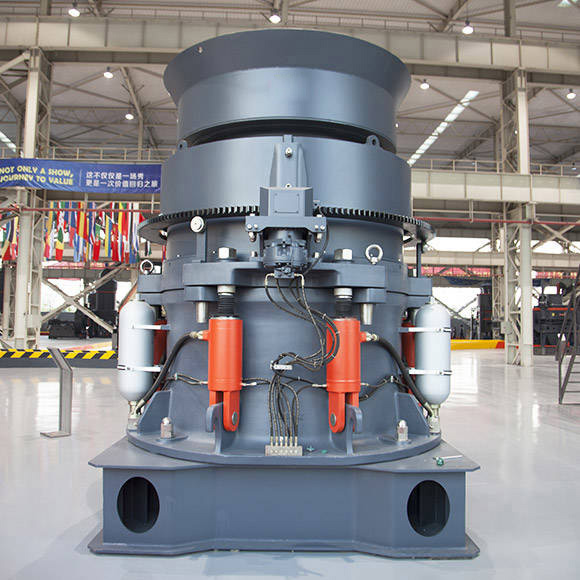A cone crusher is a vital piece of machinery used in the mining and aggregate industries to crush and process raw materials into smaller pieces. Its main function is to reduce the size of ore particles, enabling efficient extraction and further processing of valuable minerals. In this essay, we will explore the cone crusher’s key features, working principles, advantages, and limitations, as well as the factors affecting its maximum output.
A cone crusher typically consists of a sturdy outer shell, an inner crushing chamber, a mantle, and a concave liner. The ore enters the crushing chamber through the top, where the mantle and concave are situated. The mantle gyrates within the concave, generating a compressive force that breaks down the ore particles. The crushed ore then exits through the bottom of the crusher.

One of the main advantages of cone crushers is their ability to produce a more cubical product shape compared to other crushing methods. This is crucial in ensuring that the final product meets the desired specifications for various applications, including road construction, concrete production, and mineral processing.
The maximum output of a cone crusher is influenced by several factors, and understanding these factors is essential for optimizing its performance. First and foremost, the type and hardness of the ore being processed significantly impact the crusher’s capacity. Harder ores require more force to be crushed, which may lead to a reduced throughput. Additionally, the moisture content of the ore can affect its flow properties, potentially causing blockages within the crusher.
The design and geometry of the crushing chamber also play a crucial role in determining the maximum output. A well-designed chamber ensures efficient particle breakage and minimizes the occurrence of trapped material, which could reduce the crusher’s productivity.
Furthermore, the speed and eccentric throw of the mantle also influence the crusher’s output. Higher speeds and larger eccentric throws generally result in higher throughput, but this must be balanced with other operational considerations, such as liner wear and energy consumption.
The type and condition of the wear liners, including the mantle and concave, are essential components that affect the crusher’s performance. Worn-out liners can lead to reduced capacity and product quality. Regular maintenance and timely replacement of liners are vital to ensure optimal crusher output.
Operational parameters, such as the crusher’s closed-side setting (CSS), feed rate, and choke feeding, also impact the crusher’s output. The CSS determines the product size distribution, while a consistent and controlled feed rate helps maintain a stable crusher operation. Choke feeding the crusher ensures a continuous flow of material, maximizing its processing capacity.
